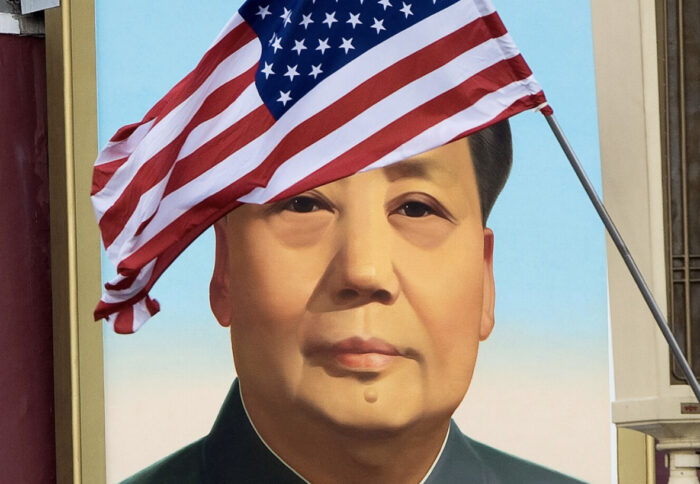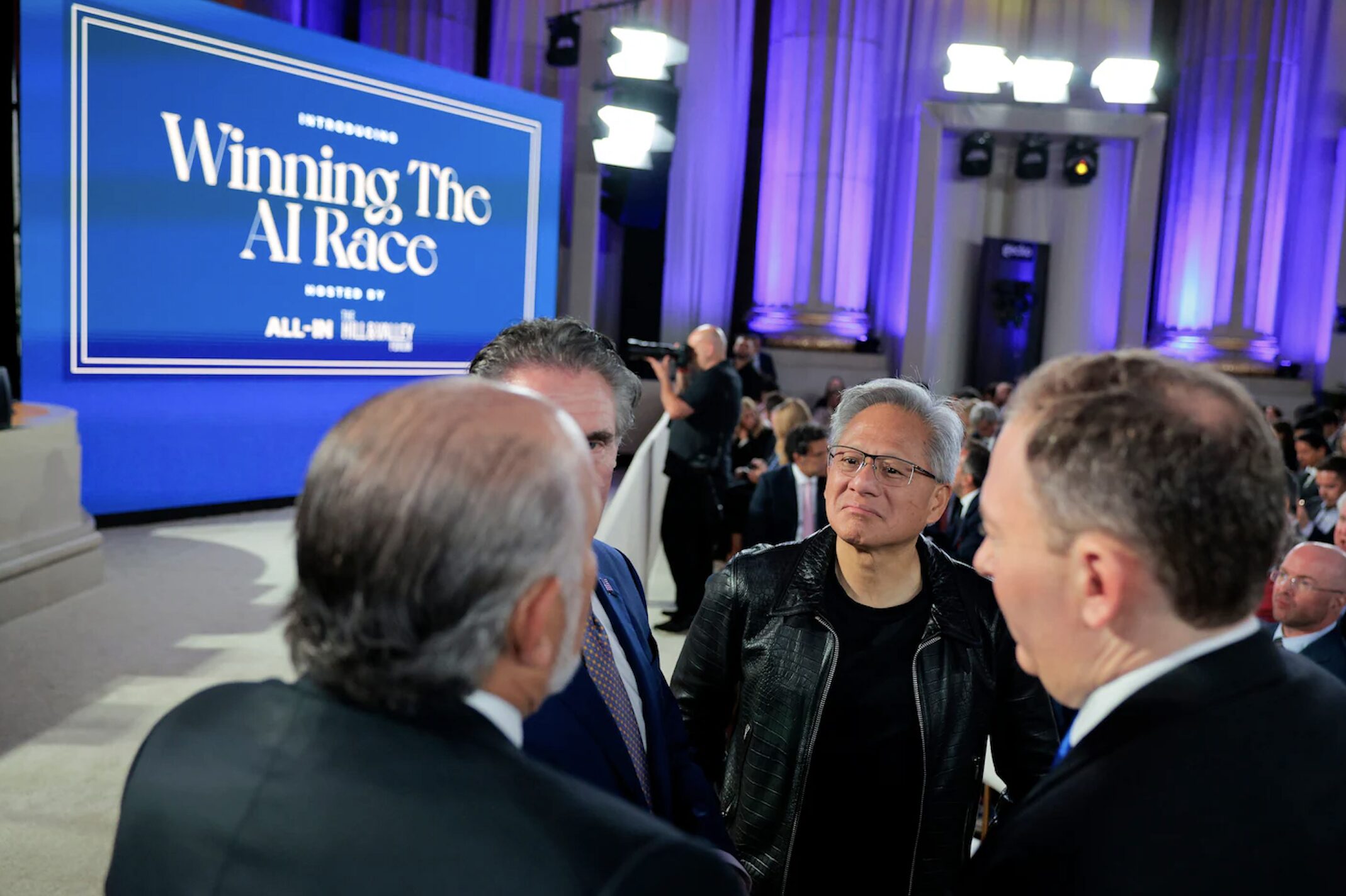
Dr. Sanjay Gupta: Why Haven’t We Cured the Common Cold?
The average person gets two to four colds a year. With all the missed school and work, that adds up to an economic impact of…
Thought Leader: Sanjay Gupta

Detente is in the air.
On May 8, US Ambassador to China Nicholas Burns and Chinese Foreign Minister Qin Gang met in Beijing — the first significant encounter since a Chinese spy balloon was spotted over Montana. True, the Chinese side couldn’t resist accusing the American side of “erroneous words and deeds,” but it was better than a frosty silence. Two days later, President Joe Biden’s national security adviser, Jake Sullivan, sat down in Vienna for lengthy discussions with Wang Yi, Qin’s boss. The two men weren’t exactly exchanging Maotai toasts; but at least they didn’t come to blows over Taiwan.
Even Sullivan’s important speech at the Brookings Institution last month was obviously intended to make Cold War II a bit less chilly. The recent past, in Sullivan’s telling, was a tale of unintended consequences. American believers in free markets and globalization had admitted China to the World Trade Organization, not realizing that China would continue to subsidize key industries. “America didn’t just lose manufacturing,” he said. “We eroded our competitiveness in critical technologies that would define the future.”
However, Sullivan explained, all this is now being addressed by the Biden administration’s new “foreign policy for the middle class.” The US now has an industrial strategy of its own, in the form of public investment to encourage the domestic production of semiconductors and of critical minerals necessary for the production of electric vehicles. America’s technological lead over China is going to reside in “a small yard [with a] high fence.” Money quote: “We are for de-risking and diversifying, not decoupling. … We are not looking for confrontation or conflict. We’re looking to manage competition responsibly and seeking to work together with China where we can.”
Detente didn’t end Cold War I in the 1970s; it just made it less fractious, reducing the risk of World War III. The same is true in today’s cold war. To get a sense of how cold this war still is, despite the shift from “decoupling” to the less drastic “de-risking,” take a look at the Chinese version of the recent past. The Chinese Foreign Ministry’s essay, “US Hegemony and Its Perils,” was published just three months ago. It is altogether different in tone.
“Since becoming the world’s most powerful country after the two world wars and the Cold War,” this tract begins, “the United States has acted more boldly to interfere in the internal affairs of other countries, pursue, maintain and abuse hegemony, advance subversion and infiltration, and willfully wage wars, bringing harm to the international community.”
The United States has developed a hegemonic playbook to stage “color revolutions,” instigate regional disputes, and even directly launch wars under the guise of promoting democracy, freedom and human rights. Clinging to the Cold War mentality, the United States has ramped up bloc politics and stoked conflict and confrontation. It has overstretched the concept of national security, abused export controls and forced unilateral sanctions upon others. It has taken a selective approach to international law and rules, utilizing or discarding them as it sees fit, and has sought to impose rules that serve its own interests in the name of upholding a “rules-based international order.”
Wait, did the Chinese government hire Noam Chomsky?
The striking thing about the tone of the Chinese document is the insecurity it betrays. The irony is that, if the Chinese were serious students of Marxism-Leninism, they would be far less impressed by US hegemony and far more optimistic about its imminent collapse under the weight of its own internal contradictions.
To ditch their inferiority complex, Qin Gang’s propaganda people should read Peter Turchin’s extraordinary new book, End Times: Elites, Counter-Elites and the Path of Political Disintegration. Turchin is a practitioner of “cliodynamics,” an ambitious attempt to apply complexity theory and much else to human history. End Times is the culmination of many years of highly original and innovative work. The only disappointment is that its conclusion has a faintly Marxian whiff:
When a state, such as the United States, has stagnating or declining real wages, a growing gap between rich and poor, overproduction of young graduates with advanced degrees, declining public trust, and exploding public debt, these seemingly disparate social indicators are actually related to each other dynamically. Historically, such developments have served as leading indicators of looming political instability. In the United States, all of these factors started to take an ominous turn in the 1970s. The data pointed to the years around 2020 when the confluence of these trends was expected to trigger a spike in political instability. And here we are.
The problem, Turchin argues, is that “the American ruling class” and “governing elites” have alienated “large swaths of degree holders,” who, “frustrated in their quest for elite positions … dream of overthrowing the existing regime.” It is all quite persuasive until you realize that the people most attracted to Tucker Carlson’s rants against the ruling elite are precisely Americans without degrees. College turns people into progressives, or at least people who do not dare question progressive ideology.
Turchin has quite a lot to say about the crisis of Qing China that produced the Taiping Rebellion (1850-1864) — perhaps the most horrific example of the kind of revolution that interests him. He does not consider the possibility that contemporary China might be as good a case for testing his theory as the US.
This may strike you as counterintuitive. If you are not following China closely, you probably have the vague idea that, now the Red Emperor has abandoned his “zero Covid” policy, everything is going swimmingly. But that is to underestimate the Chinese Communist Party’s mounting problems.
In truth, with its dire demographic prospects and its over-leveraged and depressed real-estate sector, the Chinese economy seems destined for a 20-year growth rate significantly lower than this year’s “around 5%” target. I stand by my 2019 bet with Justin Yifu Lin that China will not overtake the US in terms of current dollar gross domestic product by 2039. The Economist now agrees that we are approaching “Peak China,” while the US economy is “riding high.”
It is true that at the last Politburo meeting, on April 28, policymakers concluded that economic growth in the first quarter of this year was “better than expected” and that “market demand [had] gradually recovered.” Domestic travel has indeed revived: Volumes of passengers in cars, trains and planes are back at pre-Covid levels. Data from China’s five-day Labor Day holiday earlier this month point to a surge in travel and consumption. Domestic travel volumes during that period were 19% higher than in 2019, before the pandemic.
However, so-called revenge spending seems likely to fizzle out in the second half of 2023. Chinese credit growth showed signs of softening in March. And there will be no fiscal or monetary stimulus on the scale we saw after the 2008-09 Western financial crisis. Given the huge amounts of local government debt, much of it accrued to build towers for nobody, Chinese public finances simply could not stand it. The public debt-to-GDP ratio is projected by the International Monetary Fund to exceed 100% in 2026. Including local government borrowing , the IMF estimates that the real figure is already above 110%, while last year’s “augmented” budget deficit was a huge 17% of GDP.
True, one sector that is booming is EVs. On the roads in Beijing and Shanghai, it looks as if almost half the cars are now battery propelled. Domestic players such as SAIC, BYD and Li Auto are locked in mortal combat with one other and with Tesla, which has been forced to slash its prices to compete. Western manufacturers of conventional or hybrid vehicles are dead in the water. At the recent Shanghai Auto Show, the crowds were in the Chinese EV showrooms, while foreign showrooms looked empty. With the domestic market saturated, Chinese EVs are also flooding the world auto market. The dollar value of Chinese car exports has increased nearly fivefold in just two years.
Industrial output declined from March, while retail sales growth slackened
Shows an index with Dec. 2019 = 100. Retail sales data is seasonally adjusted
Yet recent data indicate significant headwinds for Chinese exporters. On a monthly basis, exports fell 6.4% in April. Recent purchasing managers’ indexes paint a similarly bearish picture about manufacturing. The Caixin private PMI for manufacturing dropped from 50 in March to 49.5 in April. The official manufacturing subindex for new export orders fell sharply to 47.6 in April, down from 50.4 in March.
This slowdown is making itself felt in the Chinese labor market. According to the Leading Index of Manufacturing Prosperity, produced by Shanghai Jiao Tong University, manufacturing employment and wages improved slightly in March, up from 26.1 in February to 35.9 in March, though the report remains “extremely unoptimistic” in terms of future direction. (A reading over 50 means better than the historical average while a reading below 50 means worse than the historical average.) The wage sub-index was also in the “extremely unoptimistic” range, though rising from 16.5 in February to 29.0 in March.
Another significant sign of the times is worsening inequality — despite all Xi’s talk of “common prosperity.” According to the National Bureau of Statistics of China, in 2022 the average wage in the highest-paying private-sector jobs was 2.91 times that of the average wage in the lowest-paying private-sector jobs, up from a 2.26 multiple in 2019.
But the CCP’s biggest headache is the lack of employment opportunities for young people. The official youth unemployment rate for 16- to 24-year-olds is now 20.4%, up significantly from the pre-Covid average of around 11%. Around 11.6 million college students are expected to graduate over this summer — a historic high. According to the Chinese online recruitment platform Zhaopin, only half (50.4%) of these new graduates have obtained job offers.
China’s youth jobless rate topped an all-time high in April
The concept of tang ping (“lying flat”) — opting out of the workaholic habits of older generations — is widely associated with the gloomy outlook of China’s Gen Z. This has important implications. China has a history of disaffected, over-educated youths launching disruptive mass protests — not only the Taiping Rebellion but also the 1919 May Fourth Movement, the 1989 Tiananmen protests and, most recently, the November 2022 Covid protests. Paging Peter Turchin! “A growing gap between rich and poor, overproduction of young graduates with advanced degrees, declining public trust, and exploding public debt.” That sounds a lot like China in 2023.
In the mid-1970s, when detente seemed to be decaying as evidence mounted of Soviet bad faith in the arms race and bad behavior in what was then called the Third World, Ronald Reagan and a new generation of neoconservatives began equating it with “appeasement.” This made Henry Kissinger, detente’s architect, almost as unpopular on the right as he already was on the left.
Yet Reagan and the neocons misunderstood (or misrepresented) detente. It was not born of any faith in the good intentions of the Soviets. Rather, it was motivated by a desire, first, to engage with Moscow in the belief that the more engagement there was, the less likely another Cuban Missile Crisis would become; and second, to play for time, in the hope that the US would sooner or later emerge from stagflation while the Soviet economic outlook would only deteriorate.
It worked. America put Vietnam behind it, focused on Moore’s Law, invented the personal computer, and paved the way to the internet. The Soviets embroiled themselves in worse and worse conflicts — Angola, Ethiopia, Afghanistan — and slid into complete economic stagnation. Finally, the Soviet system succumbed to a different kind of crisis from the type that interests Turchin: a crisis of legitimacy, in which more and more people simply ceased to believe in the Soviet system and the ideology on which it was based.
This was what George Kennan had always foreseen as the ultimate victory of containment. In the summer of 1947, Kennan published his anonymous essay in Foreign Affairs, “The Sources of Soviet Conduct.” In a startling passage, he likened the seeming power of the Soviet Union to that of the grand merchant family in Thomas Mann’s novel Buddenbrooks:
Observing that human institutions often show the greatest outward brilliance at a moment when inner decay is in reality farthest advanced, [Mann] compared the Buddenbrook family, in the days of its greatest glamour, to one of those stars whose light shines most brightly on this world when in reality it has long since ceased to exist. And who can say with assurance that the strong light still cast by the Kremlin on the dissatisfied peoples of the western world is not the powerful afterglow of a constellation which is in actuality on the wane? … [T]he possibility remains … that Soviet power … bears within it the seeds of its own decay, and that the sprouting of these seeds is well advanced.
I often think of that passage when I visit shiny Shanghai. And it makes we wish Jake Sullivan the best of luck with his version of detente, although I frankly doubt it will do much for the American middle class. There is some chance that Peter Turchin is right and that, in this Cold War, the crisis of legitimacy will befall the democracy, not the one-party state. On balance, however, I think the Kennan principle still applies. The seeds of decay lie within every political system, of course. But they sprout faster in the absence of freedom. Just play for time, America. It’s probably on your side.
Dr. Sanjay Gupta: Why Haven’t We Cured the Common Cold?
The average person gets two to four colds a year. With all the missed school and work, that adds up to an economic impact of…
Thought Leader: Sanjay Gupta
Erika Ayers Badan: How to Keep Creativity Alive
Hi! Ever felt like you’re on a Disney ride through every big-company headache imaginable? Think lawyers, bankers, finance goons, stale conference rooms, staid conversations and…
Thought Leader: Erika Ayers Badan
Chris Miller: Trump’s Nvidia Chip Decision Lands Hard
In a new article, “Allowing China access to advanced semiconductors puts national security and U.S. AI industry at risk,”Chris Miller — author of Chip War…
Thought Leader: Chris Miller

